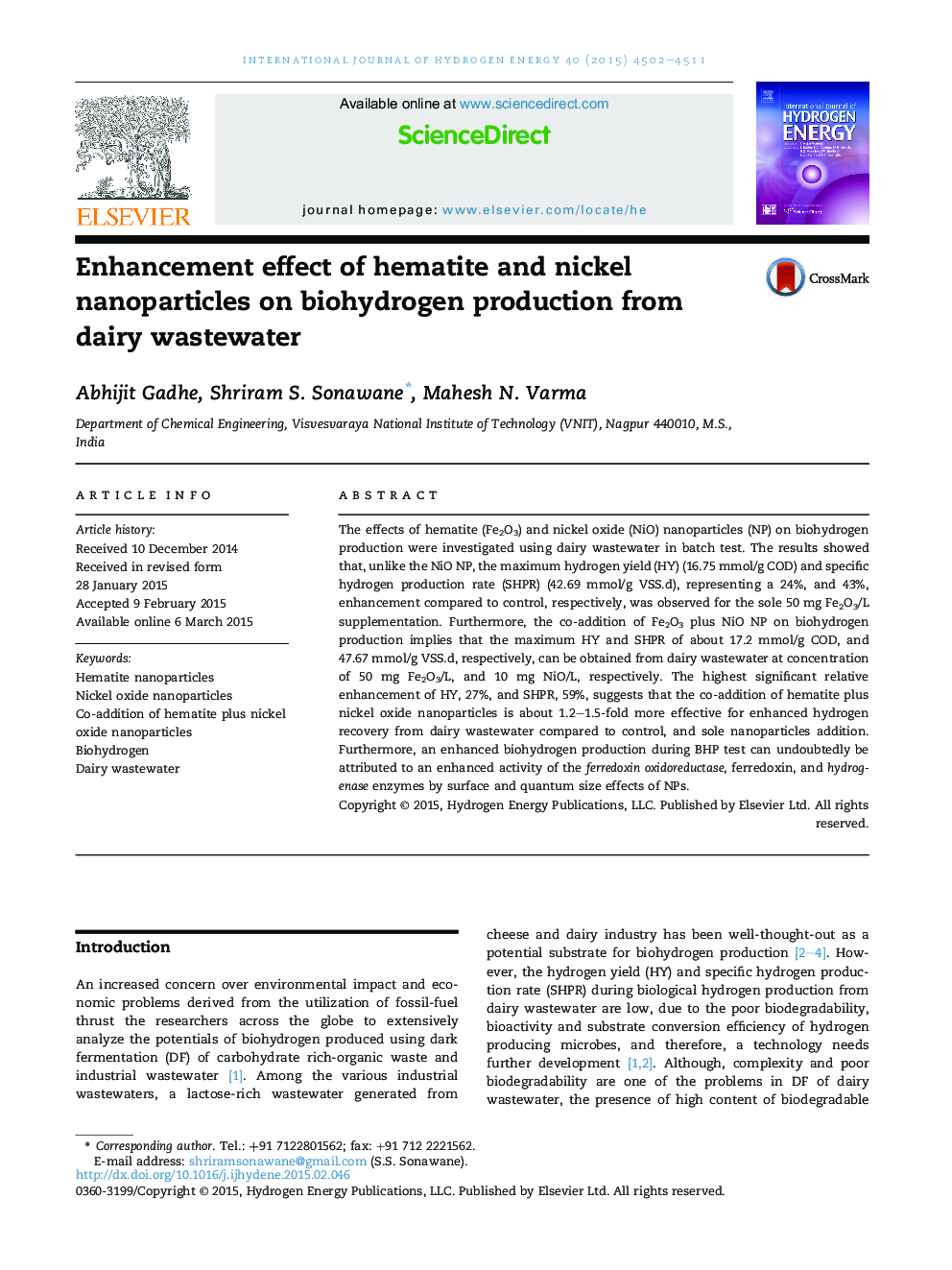| Article ID | Journal | Published Year | Pages | File Type |
|---|---|---|---|---|
| 7715821 | International Journal of Hydrogen Energy | 2015 | 10 Pages |
Abstract
The effects of hematite (Fe2O3) and nickel oxide (NiO) nanoparticles (NP) on biohydrogen production were investigated using dairy wastewater in batch test. The results showed that, unlike the NiO NP, the maximum hydrogen yield (HY) (16.75Â mmol/g COD) and specific hydrogen production rate (SHPR) (42.69Â mmol/g VSS.d), representing a 24%, and 43%, enhancement compared to control, respectively, was observed for the sole 50Â mg Fe2O3/L supplementation. Furthermore, the co-addition of Fe2O3 plus NiO NP on biohydrogen production implies that the maximum HY and SHPR of about 17.2Â mmol/g COD, and 47.67Â mmol/g VSS.d, respectively, can be obtained from dairy wastewater at concentration of 50Â mg Fe2O3/L, and 10Â mg NiO/L, respectively. The highest significant relative enhancement of HY, 27%, and SHPR, 59%, suggests that the co-addition of hematite plus nickel oxide nanoparticles is about 1.2-1.5-fold more effective for enhanced hydrogen recovery from dairy wastewater compared to control, and sole nanoparticles addition. Furthermore, an enhanced biohydrogen production during BHP test can undoubtedly be attributed to an enhanced activity of the ferredoxin oxidoreductase, ferredoxin, and hydrogenase enzymes by surface and quantum size effects of NPs.
Related Topics
Physical Sciences and Engineering
Chemistry
Electrochemistry
Authors
Abhijit Gadhe, Shriram S. Sonawane, Mahesh N. Varma,
